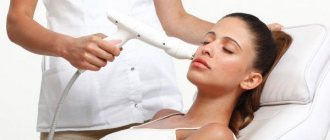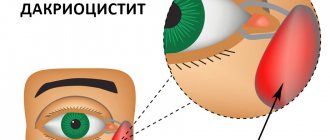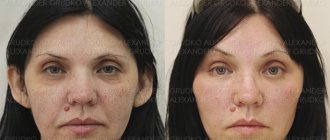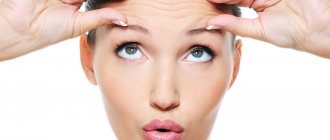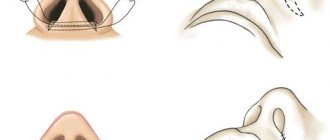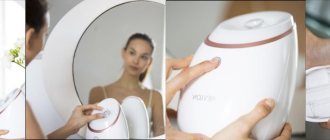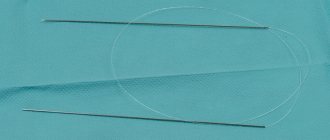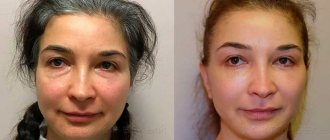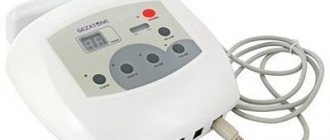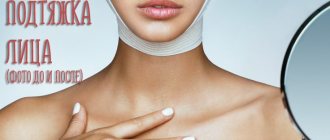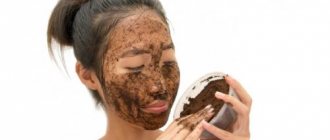Indications Contraindications About the operation Prices Results of the operation
Rehabilitation Reviews Possible complications Our advantages Tests
Endoscopic forehead and eyebrow lifting is a popular technique for correcting age-related and genetic defects in the upper part of the face. During the minimally invasive procedure, the patient gets rid of wrinkles, loose soft tissues, sagging skin and a tired expression on the face, as a result of which the patient looks 5-10 years younger. Local surgery has a minimal recovery period and is much safer than a full circumferential lift.
Indications for temporal lift
Plastic manipulation of the forehead and eyebrows is recommended for patients over 40 years of age who have the following aesthetic deficiencies:
- obvious wrinkles, folds in the forehead, bridge of the nose;
- drooping tissue, sagging skin on the bridge of the nose;
- ptosis of the eyelid and associated drooping of the canthi;
- low eyebrow line, the effect of a constantly frowning face;
- excess skin in the upper eyelid area;
- crow's feet, facial wrinkles;
- lack of firmness, sagging skin in the temple area;
- genetically “heavy” eyelids.
Is correction of one area of the face enough to transform the patient’s appearance?
Let's just say that in different age categories there are different combinations of age manifestations. If we are talking about the middle category, these are people 35-45 years old, then symptoms may manifest in one zone, but this does not mean that no changes occur in another zone, they just may be less pronounced. It all depends on the severity of age-related manifestations, and if this is clearly noticeable and introduces some kind of dissonance in the appearance of a given patient, then, of course, it needs to be corrected comprehensively.
It’s like a puzzle that fits into a picture and creates a certain integrity of a person’s image, so you need to take a comprehensive approach and adjust adjacent zones that anatomically complement each other.
Contraindications
Plastic surgery of the upper third of the face is not performed during pregnancy and breastfeeding. Contraindications also include serious health conditions:
- acute infectious processes;
- oncological diseases;
- exacerbation of chronic diseases;
- mental disorders;
- inflammation or injury in the facial area;
- bleeding disorders;
- hypertension, other serious heart and vascular diseases;
- endocrine disorders, thyroid problems;
- diabetes;
- acute respiratory diseases.
Features of the operation
Endoscopic forehead and eyebrow lifting is performed under general anesthesia. The surgeon makes 3-5 small incisions (0.5-1 cm) in the area of hair growth without damaging the hair follicles. A special instrument is inserted through incisions or micro-punctures. A separate puncture is intended for inserting an endoscope with a miniature video camera, which allows manipulations under full visual control.
Instead of traditional excision of excess tissue, a low-traumatic detachment is performed endoscopically with displacement and fixation in the desired position with deep clamps. The exfoliated tissue is tightened to smooth out facial wrinkles, raise the eyebrow line, and restore skin tone.
Depending on the complexity of the operation, endoscopy takes from 45 minutes to 2 hours. In simple cases, correction is carried out on an outpatient basis, without hospitalization. The patient leaves the clinic after 2-3 hours of postoperative observation.
Benefits of endoscopic upper face lift:
- No noticeable surgical scars. After the operation, only subtle scars remain on the scalp.
- Absence of severe complications, targeted selective effect bypassing nerves and blood vessels.
- Accelerated recovery. Since the endoscope does not damage blood vessels or nerves, the risk is minimal. The rehabilitation period is only 10-14 days.
- A combination of pronounced effect and low trauma.
Endoscopic lifting significantly rejuvenates the upper zone, which always attracts attention. Simple correction of the eyebrows, upper eyelid, and folds on the bridge of the nose gives the face a youthful, optimistic expression.
Middle third of the face
In the middle third of the face, laugh lines and vertical wrinkles above the upper lip most often require correction. An interesting direction has emerged to eliminate exposed gums when smiling (usually with a constitutionally short upper lip) and to reduce the “hookedness” of the nose (especially with mobility of the tip of the nose during articulation, smiling, laughing, chewing) [2].
Work tactics
1. Exposed gums, or the so-called gummy (gingival) smile, is easily corrected by introducing “Dysport” into the muscles that lift the upper lip and wing of the nose (m. Levator abii superiori setalaequenasi), 4–6 units on each side, at points located in close proximity to the wings of the nose, in the area of the apex of the nasolabial fold (Fig. 8).
2. Active work of the muscle that lowers the nasal septum (m. depressorseptinasi). With this feature, a hooked nose may appear or intensify with age. Myolifting of the nasal tip is achieved by injecting 6–10 units of Dysport directly into the m. Depressor septinasi (from the transitional fold, from bottom to top, into the columella) (Fig. 9 a, b).
3. “Bloating” wings of the nose (Fig. 10).
Correction with Dysport is effective when 6–8 units are administered on each side.
4. Laughter muscles. Recall that m. Risorius are very superficial; they should be injected very carefully and shallowly to prevent diffusion of the drug into the underlying muscles. The Dysport injection points are easily determined here: the “dimples” formed when smiling and laughing are an accurate guide. The main thing is that the muscles are injected at a symmetrical distance (both horizontally and vertically) on both sides. Unilateral work is possible in the presence of the unpaired laughter muscle or asymmetric activity of these muscles.
5. Vertical wrinkles above the upper lip are formed by superficially located fibers of the orbicularis oris muscle, and therefore superficial injection of Dysport is the optimal technique and method of influence. Symmetrical administration of the drug in this area is mandatory. An indentation of 1 cm medial to the corners of the mouth is also required in order to prevent diffusion of the toxin into the node of the corner of the mouth - modiolusangulioris, located approximately 1 cm lateral to the corners of the mouth, where the muscles of the perioral region converge. Typically, 2 points are injected on each half of the upper lip, 1-2 units per unit into each of them, for a total of 4-8 units of Dysport. The safest tactic is when patient management begins with minimal doses, then doses are increased as necessary, but provided there is no discomfort. Before starting work in this area, you should clarify the patient’s profession and discuss with him the possible - albeit short-term and transient - consequences of the procedure, since, for example, for patients with “speech” specialties, even minor discomfort is acutely noticeable. With a short upper lip, a decrease in sphincteric motility of the orbicularis oris muscle can visually reduce the distance from the lip to the tip of the nose, which is not always aesthetically acceptable. In this case, it is preferable to solve the problem of “purse-string” wrinkles by using alternative methods (peelings, biorevitalization, fillers). In the case of correction of a long upper lip, on the contrary, in addition to eliminating vertical wrinkles above the upper lip, we will also receive an additional aesthetic result that harmonizes the proportions of the face with a more voluminous upper lip and a decrease in the nose-lip interval.
Lower third of the face Aesthetic problems of the lower third of the face, like no other, are determined by the condition of the dental system. In order to correctly assess the etiopathogenesis of wrinkles, a cosmetologist needs to have at least a minimal understanding of normal occlusion and its variations as the root cause (along with gravitational ptosis) of the redistribution of facial activity and volumes of soft tissues of the face [9]. This knowledge will help to promptly refer patients to orthodontists. , gnathologists, orthopedists, prosthetists, who will analyze the role of dental pathology in the formation of an aesthetic problem. Such interdisciplinary cooperation will not only allow timely initiation of treatment for pathology and age-related changes in the dental system, but also predict the muscular-dermatological consequences of bone pathology and aging, and therefore count on a better aesthetic prognosis in cosmetic correction [5, 6, 8]. Not long ago, Dysport injections in the lower third of the face
was limited by the method used. Now this is one of the directions in the prevention of gravitational ptosis of the soft tissues of the face. A certain risk of botulinum toxin therapy in this area is associated with a high physiological load on the muscles of the lower third of the face, inaccurate assessment of the individual characteristics of facial expressions, synergistic and antagonistic relationships of adjacent muscles, as well as technical errors. Nevertheless, this is an extremely interesting direction associated with the dominant role of the involuntary component in the innervation of the lower third of the face. The muscles of the lower third of the face have a high density of receptors for stress hormones, which also contributes to the development of their hyperactivity with age and, as a consequence, an increase in the phenomena of gravitational ptosis of the tissues of the middle and lower thirds of the face. Many studies confirm that the emotional sphere significantly influences the age-related dynamics of facial aesthetics [10]. Note that the depressor muscles of the upper third of the face also contribute to the formation of gravitational ptosis, since their contractile vector coincides with the gravity vector.
Rice. 8. Correction of a gingival smile
Work tactics
Obviously, combined correction of muscles whose contractile vector coincides with the direction of gravity will be optimal for use in this area. Thus, relaxation of the muscles that lower the corners of the mouth (m. depressorangulioris) makes it possible to achieve a noticeable lifting of the oval of the face with emerging (but not yet formed!) gravitational ptosis of soft tissues and even horizontal alignment of the “sad” corners of the mouth. And the face, which often seems sad because of the drooping corners of the mouth, acquires a more cheerful expression. The introduction of filler with a reversal of the corners of the mouth makes an additional contribution to the restoration of the lower third of the face. Injections are made exclusively along the edge of the lower jaw, very superficially, using the mesodisport technique. The best landmark is the area of descent itself. The injection points are located either in one horizontal row along the edge of the lower jaw, or in a checkerboard pattern along the facial and cervical surfaces of the mandibular edge. Increasingly, the linear technique of mesotherapeutic administration of Dysport is being used in this area. The tone of the muscles that lower the corners of the mouth is assessed with the patient’s active facial expressions both frontal and in profile. This is the most superficial muscle in the lower third of the face, so the drug is administered subcutaneously, tangentially (at an acute angle, almost parallel to the surface of the skin). The point where Dysport can be injected into the corner of the mouth depressor (4-10 units on each side) is located at a distance of 1-1.5 cm downwards and 1-1.5 cm to the side from the corner of the mouth. To reduce the risk of side effects, it is better to move the Dysport injection point along m. Depressor anguli ori down, to its lower third, closer to the edge of the lower jaw. To make it easier to find the insertion point, diagonals are drawn from the wings of the nose, through the corners of the mouth to the edge of the lower jaw. The section of the line from the corner of the mouth to the edge of the lower jaw is divided into three parts, and the point separating the lower segment from the middle is the safest for administering the drug. Note that the aesthetic result when working with depressors of the lower third of the face is achieved not only due to limited relaxation of the indicated depressor muscles, but also by increasing the tone of their antagonists. This is a dynamic process that does not develop as rapidly here as in the area of the upper and middle third of the face. Remembering this is useful not only for the specialist: informing the patient in advance allows him to meet his expectations.
Stories from our patients:
Tamara M.03/02/2020
Yakimets Valery Grigorievich! Thank you very much for everything! Now I'm happy. I look at myself in the mirror and can’t stop looking. I'm 62, but now I look (I dare say) 40! It's just magic. This winter I had an endosurgical face lift: forehead and lower eyelid blepharoplasty! How happy I am now. I will recommend you to everyone. Perfect. I would like to express my special gratitude to all the staff and cosmetologists! All at the highest level.
Read moreHide
Maria F.02/27/2020
Dear Valery Grigorievich! My husband and I would like to express our deep gratitude to you for the operations performed! This year we did smas, and I had blepharoplasty! We both look 15 years younger! The rehabilitation was as easy as possible. During the postoperative days, we visited the clinic, came for bandages and did physical procedures to make the rehabilitation go faster. This is a miracle! The bruises disappeared before our eyes and the faces very quickly began to take on their shape. You have talent. You feel every millimeter so subtly! I'm just amazed at how symmetrical everything looks. We thank you for your work, for your diligence and for your attentiveness to your patients
Read moreHide
Agnet24.02.2020
Dear, Valery Yakimez. Thanks a lot for your diligence. I'm writing from Germany. And want to inform a great number of people. In spite of the fact, that Germany is one of the most advanced country in healthcare, I want to everyone know that his qualities as a surgeon can lead him to be a number one worldwide known surgeon! I can't get enough of my face! It's amazing now! Thank you for your work.
Read moreHide
Evgenia O.02/18/2020
Finally got around to thanking my beloved doctor Valery Grigorievich Yakimets! I remember you with a kind word every day! My life has changed thanks to you. I just can’t get enough of my new shape. Only 3 months have passed, but my breasts have already “emerged” and everything looks and feels wonderful! Now I have no complexes!!! And you helped me with this! I didn’t even think that breasts could look so natural.
Read moreHide
Dayana16.02.2020
Dear Valery Grigorievich! I would like to thank you for the mammoplasty surgery performed! I flew to you from America and did not regret at all that a lot of time was spent on the route! I recommend you to all my family and friends, one is also going to visit you from the states :) Everyone is simply amazed by the result! Even women on the beach come up to me and compliment me, admiring my breasts. You are already very popular here in America and I think this is a great indicator of professionalism! Thank you thank you thank you!!! For any change in appearance, I will fly only to you and your wonderful clinic!!!! Thanks a lot:)
Read moreHide
Irina D.13.02.2020
I would like to thank Valery Grigorievich Yakimets! Thank you very much for my perfect breasts! I'll tell you my terrible backstory... The fact is that 3 years ago, I decided to have breast augmentation surgery. (I did it for the first time NOT AT YAKIMTS). Everything was ruined for me, I lost all hope that this could somehow be fixed. BUT!!! TO my GREAT HAPPINESS, I ENTERED V.G. YAKIMTS!!! Girls, if you are still wondering which doctor to see, my advice is that Yakimets is a wonderful surgeon. He corrected the previous work and made everything very natural and incredibly aesthetically pleasing! The work was extremely difficult! But the doctor did everything perfectly! Now, I only recommend him to all my friends! In Moscow and other cities, unfortunately, there are a lot of incompetent surgeons! Don't make my mistake! Go straight to YAKIMTS!
Read moreHide
Lyubov B.11.02.2020
I am writing this review because I cannot help but express my gratitude to Tatyana Alexandrovna Ivanchenkova! Thank you very much for your work! Thanks for the result! I have had liposuction done on many areas. Exactly 2 years have passed and I still can’t believe my happiness! You are a sorceress, you are a true professional with a capital P. Tatyana Aleksandrovna, thank you for my PERFECT body!
Read moreHide
Alexandra S.02/09/2020
Thank you very much for the liposuction operation, Tatyana Aleksandrovna Ivanchenkova! I was extremely dissatisfied with my body, nothing helped me. In the fall, in October 2020, I decided to have surgery. If in other clinics there were moments that alarmed me, I can confidently say that this did not happen at the Estet Clinic. I was amazed by the literacy of the doctors and Tatyana Alexandrovna’s professional approach! Level - 10 out of 10!!! Thank you!!!
Read moreHide
Victoria02/08/2020
I had surgery last winter 2020 with Ivanchenkova! Everything was done at the highest level. Entering the Estet Clinic, I immediately felt the wonderful energy and high level of staff. Everything was explained to me clearly and clearly during the consultation, all questions were answered, and I received extremely clear and competent answers. I had liposuction on my inner thighs! Now life has sparkled with different colors. Everything is done as carefully as possible and anatomically fits my body proportions. Everything looks incredibly harmonious! Many thanks to Estet Clinic for politeness and kindness, and to Tatyana Alexandrovna for her professionalism.
Read moreHide
Olga K.02/06/2020
Dear Tatyana Alexandrovna! I can’t help but share my joy with others. First of all, I want to tell you that you are a miracle surgeon; there are really few of them in our country. Thank you for your abdominoplasty surgery! I'm delighted with the result. Everything went so easily and as painlessly as possible that I couldn’t even imagine! Thank you for your talent and for the happiness you give to your patients.
Read moreHide
How important is the stage of patient rehabilitation after plastic surgery?
I believe that plastic surgery should work hand in hand with cosmetology. Many patients at some stage require rehabilitation, recovery and care. It is clear that there is a stage of the acute postoperative period, when, in principle, more care is needed, antiseptics, creating comfortable conditions for the injured area, it is necessary to minimize symptoms, but then rehabilitation procedures can really be included. This can be microcurrents, ultrasound, lymphatic drainage massage, various physiotherapeutic techniques, which are most often used by cosmetologists. At this stage, cosmetology can significantly help our patients rehabilitate, go through the recovery phase more quickly and quickly return to social life.
You may be interested in the video:
Share:
Possible complications
The minimally invasive technique reduces the risks of complications to a minimum, relieves the patient of unaesthetic scars, and shortens the recovery time. When performing endoscopic lifting of the upper third of the face, serious complications are excluded, for example, innervation or proliferation of blood vessels. However, if the surgeon is insufficiently qualified and the rules of antisepsis are violated, one cannot exclude such negative consequences as a feeling of pain or numbness, violation of symmetry and facial expressions, infection of the sutures and impaired hair growth.
